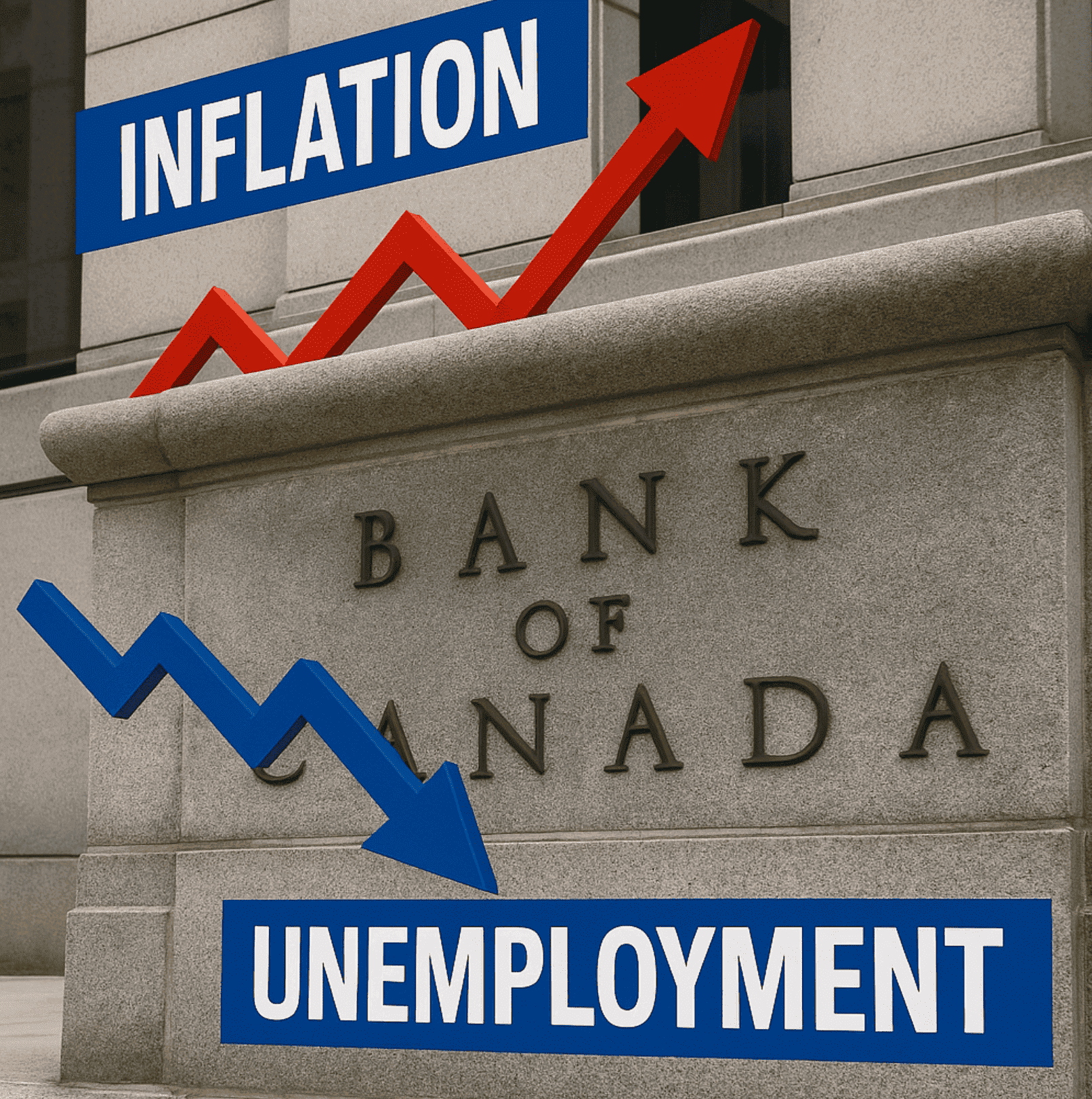Bank of Canada: Inflation vs Unemployment – Are 2008-Style Rates Coming Back?

Bank of Canada at a Crossroads: Should the Focus Be on Unemployment or Inflation?
The Bank of Canada (BoC) finds itself at a pivotal moment in 2025. Economic indicators are flashing conflicting signals: inflation has cooled compared to its pandemic-era highs, but unemployment is climbing at its fastest pace in years. The central question is whether the BoC should continue prioritizing inflation, or shift its attention more urgently to the deteriorating labour market.
Rising Unemployment: A Warning Signal
Recent data revealed that Canada lost over 65,000 jobs in August, pushing the unemployment rate up to 7.1%, its highest level since the pandemic rebound. This weakening labour market suggests that higher borrowing costs are now biting into business confidence and hiring. For many households, job losses outweigh any benefit from easing inflation.
Inflation: Cooling, But Not Gone
On the other hand, the BoC’s longstanding concern—inflation—remains above its 2% target in key categories. Shelter, rent, and wage-driven services inflation are proving sticky, even as headline CPI drifts lower. This keeps pressure on the central bank to avoid cutting too aggressively, for fear of reigniting price growth.
Are We Heading Back to 2008-Style Rates?
Markets are now betting on a rate cut at the September 17th meeting, which would bring the overnight rate down from 2.75%. Some analysts even speculate that if the labour market continues to soften, Canada could eventually see interest rates closer to the ultra-low levels witnessed after the 2008 financial crisis, when the BoC slashed rates to 0.25% to stabilize the economy.
However, there are key differences today. Unlike 2008, Canada is not facing a global credit collapse, but rather a growth slowdown driven by high debt levels and restrictive policy. While rates may fall, a return to near-zero levels is unlikely unless unemployment worsens dramatically or a global shock forces the BoC’s hand.
Striking the Balance
The debate boils down to a difficult balancing act:
Prioritize unemployment → cut rates sooner, risk letting inflation rise again.
Prioritize inflation → keep rates higher, risk a deeper recession and more job losses.
The BoC has signaled it will remain data-dependent, weighing inflation trends against labour market weakness. For Canadians, the outcome will directly affect borrowing costs, housing affordability, and the pace of economic recovery.
Conclusion
The BoC’s upcoming decisions will set the tone for the rest of 2025. If unemployment continues to climb, the pressure to ease policy will outweigh inflation concerns. But unless inflation is firmly under control, a repeat of the near-zero rates of 2008 seems unlikely. Instead, Canadians may be headed toward a middle ground: gradual cuts that try to ease economic pain without losing the inflation fight.
Each Office is Independently Owned & Operated • Brokerage 13072 | © Copyright 2024 . All Rights Reserved